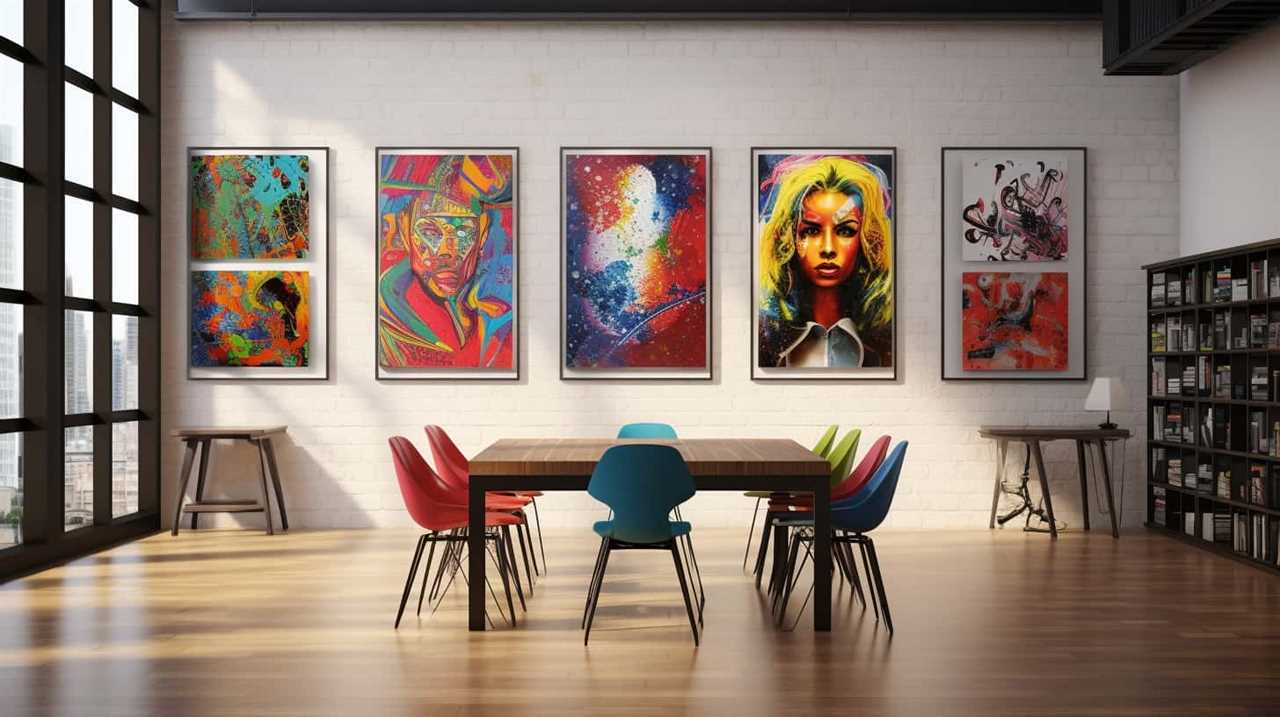Have you ever been in awe of the captivating mix of colors on a digital canvas? Have you been mesmerized by the intricate details of a virtual sculpture?
We, as experts in the art world, find ourselves compelled to explore the digital evolution that is sweeping through the realm of creativity. Art, once bound by traditional mediums, is now breaking free, embracing the limitless possibilities offered by technology.
As we witness this transformation, we can’t help but quote about it, for it is a revolution that liberates both the artists and the audience. The digital age has left an indelible mark on art, challenging us to rethink what it means to create, to express, and to connect.
Join us on this journey as we delve into the profound impact of this digital revolution on the world of art.
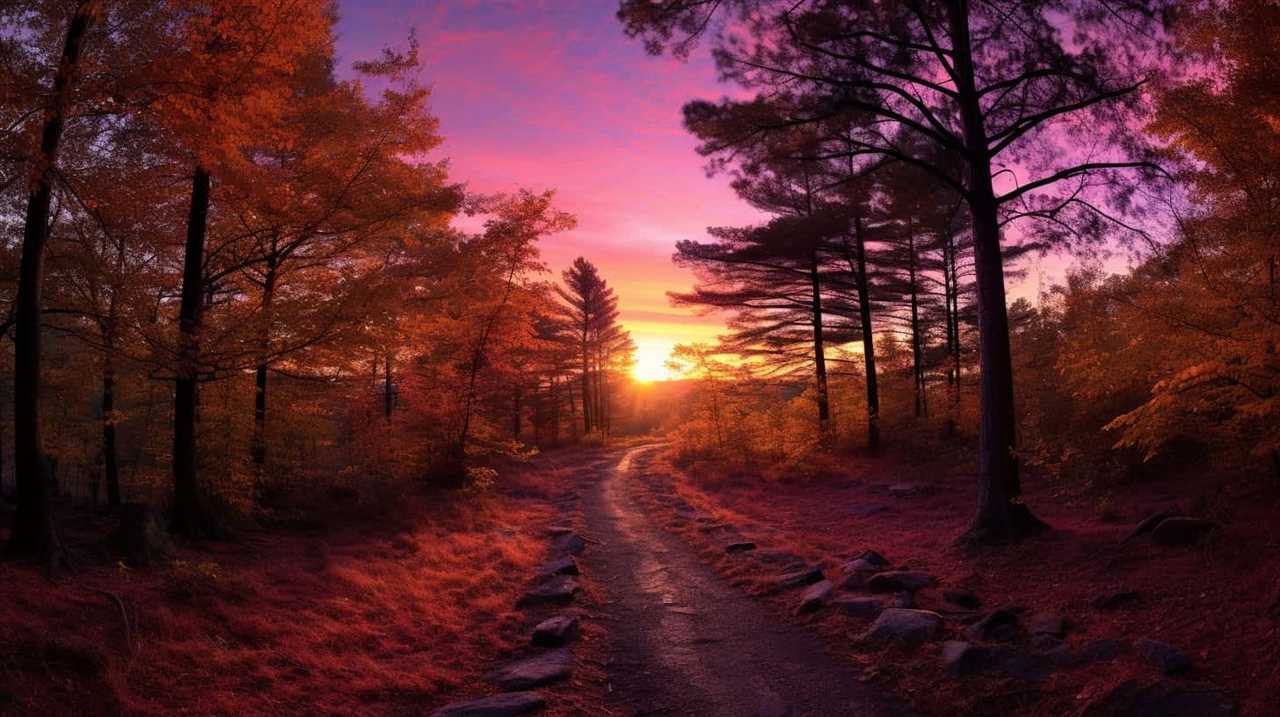
Key Takeaways
- Rise of NFTs (non-fungible tokens) is a significant factor in the digital evolution of art, allowing artists to tokenize and sell their digital artworks on blockchain platforms.
- Technology is playing a crucial role in enhancing accessibility and breaking down barriers in the traditional art world, with the integration of VR, AR, holographic displays, and interactive installations in art galleries.
- Digital platforms and tools are enabling artists to create, share, and sell their work in new ways, challenging established norms and pushing boundaries in traditional art forms.
- The digitalization of art is revolutionizing the art world by opening up new possibilities for artists to create and share their work globally, democratizing the art world, and shaping the future of art.
The Digital Transformation of Art
We are witnessing a profound shift in the art world as digital technology revolutionizes the way art is created, experienced, and shared. The emerging trends in the digital art market are indicative of this transformation. Over the past decade, the digital art market has experienced exponential growth, driven by advancements in technology and changing consumer preferences.
One of the key emerging trends in the digital art market is the rise of NFTs, or non-fungible tokens. NFTs have gained significant attention in recent years, allowing artists to tokenize their digital artworks and sell them on blockchain platforms. This has opened up new opportunities for artists to monetize their work and reach a global audience.
Another important trend is the increasing use of virtual reality (VR) and augmented reality (AR) in the creation and exhibition of art. VR and AR technologies enable artists to create immersive and interactive experiences for viewers, blurring the boundaries between the physical and digital worlds. This has created a new dimension in art, allowing for more dynamic and engaging experiences.
Furthermore, social media platforms have played a crucial role in the growth of the digital art market. Artists can now easily share their work with a vast audience, bypassing the traditional gatekeepers of the art world. This democratization of art has empowered artists to gain recognition and build their own communities online.

Embracing Technology in the Art World
As technology continues to evolve, its impact on the art world is becoming increasingly evident. Digital art is gaining prominence, offering new ways for artists to express themselves and pushing the boundaries of creativity.
This embrace of technology also enhances accessibility, allowing art to reach a wider audience and breaking down barriers that once existed in the traditional art world.
Digital Art’s Growing Impact
The art world’s embrace of technology is revolutionizing the impact of digital art. With the rise of digital platforms and tools, artists now have the ability to create, share, and sell their work in ways that were previously unimaginable. This has had a profound impact on traditional art forms, challenging established norms and pushing boundaries.
Digital art has also found a place in education, transforming the way art is taught and experienced. Through interactive digital installations, virtual reality experiences, and online learning platforms, students now have access to a wealth of artistic resources and opportunities for exploration. The integration of technology in art education not only enhances creativity and technical skills, but also encourages critical thinking and interdisciplinary collaboration.

As technology continues to evolve, the impact of digital art will only grow, shaping the future of the art world and expanding its reach to new audiences.
Enhancing Accessibility and Creativity
The integration of technology in the art world enhances accessibility and creativity for artists and audiences alike. By embracing technology, the art world is expanding opportunities for artists to experiment with new mediums and techniques. Digital tools and platforms have made it easier for artists to reach a wider audience, breaking down geographical barriers and allowing for greater visibility.
Additionally, technology has fostered innovation by providing artists with new ways to create and express themselves. From virtual reality to interactive installations, technology has opened up a whole new realm of possibilities for artistic expression.
This integration of technology not only enhances accessibility for artists, but also for audiences, who can now engage with art in new and immersive ways. The art world is evolving, and technology is playing a crucial role in enhancing accessibility and fostering innovation.

Revolutionizing Art Through Digitalization
As we explore the subtopic of revolutionizing art through digitalization, it becomes evident that digital artwork has had a significant impact on the art world. Traditional art forms are now being challenged by the rise of digital art, blurring the boundaries between the two.
Looking ahead, it’s crucial to consider the future of art and how digitalization will continue to shape and transform the artistic landscape.
Digital Artwork’s Impact
Artists and art enthusiasts are witnessing a transformative revolution as digitalization revolutionizes the impact of artwork.
The emergence of the digital art market has opened up new possibilities for artists to create and share their work with a global audience.
Technological advancements in art have allowed for the creation of interactive and immersive experiences that were previously unimaginable. Artists can now experiment with new mediums, such as virtual reality and augmented reality, pushing the boundaries of traditional art forms.
This digital revolution has also democratized the art world, making it more accessible to a wider audience and breaking down barriers to entry. As a result, artists have more opportunities to showcase their work and connect with art lovers around the world.
The impact of digitalization on artwork is undeniable, and it continues to shape the future of the art world.
Traditional Vs. Digital Art
We have witnessed a transformative revolution in the art world as digitalization has revolutionized the impact of artwork, particularly in the comparison between traditional and digital art. Traditional techniques, which have been the foundation of art for centuries, are now being challenged by the advancements in digital innovation. While traditional art relies on physical materials and tools, digital art harnesses the power of technology to create stunning and immersive experiences. The table below highlights some key differences between traditional and digital art:

| Traditional Art | Digital Art |
|---|---|
| Requires physical materials like canvas and paint | Created using digital tools and software |
| Time-consuming process | Allows for faster creation and experimentation |
| Limited to a physical medium | Can be easily reproduced and shared online |
Digital innovation has opened up new possibilities for artists, offering them greater flexibility, accessibility, and the ability to push the boundaries of creativity. However, it is important to recognize and appreciate the value of traditional techniques, as they are the foundation upon which art has evolved. The integration of traditional and digital art can lead to groundbreaking artistic expressions that captivate and inspire audiences in ways never before possible.
Future of Art
The digital revolution has sparked a transformative shift in the art world, revolutionizing the future of art through the integration of technology and creativity. As technology continues to advance, it has become an essential tool for artists to enhance their artistic expression. The digital medium allows artists to experiment, innovate, and push the boundaries of traditional art forms. This integration of technology not only expands the possibilities for artistic creation but also opens up new avenues for artists to reach a wider audience.
One significant impact of this digital revolution is the growth of the digital art market. With the rise of social media platforms and online marketplaces, artists can now showcase and sell their digital artwork to a global audience. This has democratized the art world, breaking down barriers to entry and allowing artists from diverse backgrounds to gain recognition and success. The digital art market has created a platform for artists to connect directly with collectors and art enthusiasts, bypassing the traditional gatekeepers of the art world.
The Impact of the Digital Age on Art
One key aspect of the digital age’s impact on art is the exponential increase in accessibility to artistic creations. In today’s technologically advanced world, digital art’s influence has brought about significant changes in how art is created, shared, and experienced.

Here are four ways in which the digital age has transformed the art world:
- Democratization: The internet has made art more accessible than ever before, allowing artists to showcase their work to a global audience with a few clicks. This has given rise to new voices and perspectives that were previously marginalized.
- Collaboration: Digital platforms have facilitated collaboration between artists from different parts of the world, enabling the exchange of ideas, techniques, and cultural influences. This has led to the creation of hybrid art forms that blend traditional and digital mediums.
- Interactivity: Technological advancements in art have made it possible for viewers to actively engage with artworks. Virtual reality, augmented reality, and interactive installations provide immersive experiences that transcend the boundaries of traditional art.
- Preservation: Digital technology has revolutionized the preservation and archiving of artworks. Digital formats allow for the storage and reproduction of art without degradation, ensuring that it can be enjoyed by future generations.
The impact of the digital age on art is undeniable. It has opened up new avenues for artistic expression, fostered collaboration and interactivity, and revolutionized the way art is preserved and shared. As we continue to embrace technological advancements, the digital age will undoubtedly shape the future of art in ways we can’t yet imagine.
Artists Responding to Technological Advancements
Often, artists embrace technological advancements and adapt their creative practices to incorporate new digital tools and mediums. The integration of technology into art has opened up new avenues for artistic expression and has revolutionized the way artists create and engage with their audiences. Technological innovations in art have provided artists with the means to explore new dimensions, experiment with unconventional materials, and challenge traditional notions of the artistic process.
One notable example of artists embracing technology is the use of digital software and tools in the creation of digital art. This medium allows artists to manipulate and transform images in ways that were previously unimaginable. With just a few clicks, artists can now create complex compositions, alter colors and textures, and even simulate realistic three-dimensional environments. This has allowed artists to push the boundaries of their creativity and produce visually stunning works that captivate viewers.

Another way in which artists have responded to technological advancements is through the use of interactive installations and virtual reality experiences. These immersive artworks invite viewers to actively engage with the art, blurring the lines between the observer and the observed. By incorporating technology, artists are able to create dynamic and interactive experiences that challenge traditional notions of art and invite viewers to become active participants in the creative process.
To further illustrate the impact of artists embracing technology, consider the following table:
| Technological Innovations in Art | Artists’ Response |
|---|---|
| Digital software and tools | Manipulating and transforming images in unprecedented ways, pushing the boundaries of creativity |
| Interactive installations | Creating immersive and interactive experiences that challenge traditional notions of art |
| Virtual reality experiences | Engaging viewers as active participants in the creative process, blurring the lines between observer and observed |
Through the integration of technology into their artistic practices, artists are able to explore new artistic possibilities, challenge the status quo, and push the boundaries of what is considered art. This constant adaptation to technological advancements not only allows artists to stay relevant in a rapidly changing world but also contributes to the evolution and liberation of art as a whole.
Exploring New Avenues in Digital Art
In our exploration of digital art, we’ve discovered exciting new avenues for artistic expression and experimentation. The digital art revolution has opened up a world of possibilities, allowing artists to push the boundaries of their creativity in ways that were never before imaginable.

Here are some of the innovative ways artists are exploring the realm of digital art:
- Augmented Reality (AR): Artists are using AR technology to create immersive experiences, blurring the line between the real and the virtual. Through AR, they’re able to overlay digital elements onto the physical world, transforming ordinary spaces into interactive and dynamic artworks.
- Generative Art: With the help of algorithms and computer programming, artists are able to create artworks that are constantly evolving and changing. Through generative art, they’re able to explore the intersection of art and technology, creating complex and mesmerizing visuals that are impossible to replicate.
- Virtual Reality (VR): Artists are using VR technology to transport viewers into entirely new worlds. Through VR, they’re able to create immersive environments where viewers can fully immerse themselves in the artwork, becoming active participants rather than passive observers.
- Interactive Installations: Artists are using sensors and interactive technology to create artworks that respond to the viewer’s movements and actions. These interactive installations invite viewers to engage with the artwork in a physical and participatory way, blurring the boundaries between the artwork and the viewer.
Through exploring innovation in digital art, artists are revolutionizing the way we perceive and experience art. The digital medium has provided them with a platform to push the boundaries of creativity, allowing for new forms of artistic expression to emerge.
As the digital art revolution continues to evolve, we can only imagine what exciting new avenues artists will explore next.
Rethinking Traditional Art in a Digital Context
Traditional art is undergoing a transformative shift in the digital context. As we explore digital mediums, we are redefining artistic expression and challenging the boundaries of what is considered "art". The integration of technology has opened up new avenues for creativity, enabling artists to experiment with innovative techniques and engage with audiences in unprecedented ways.
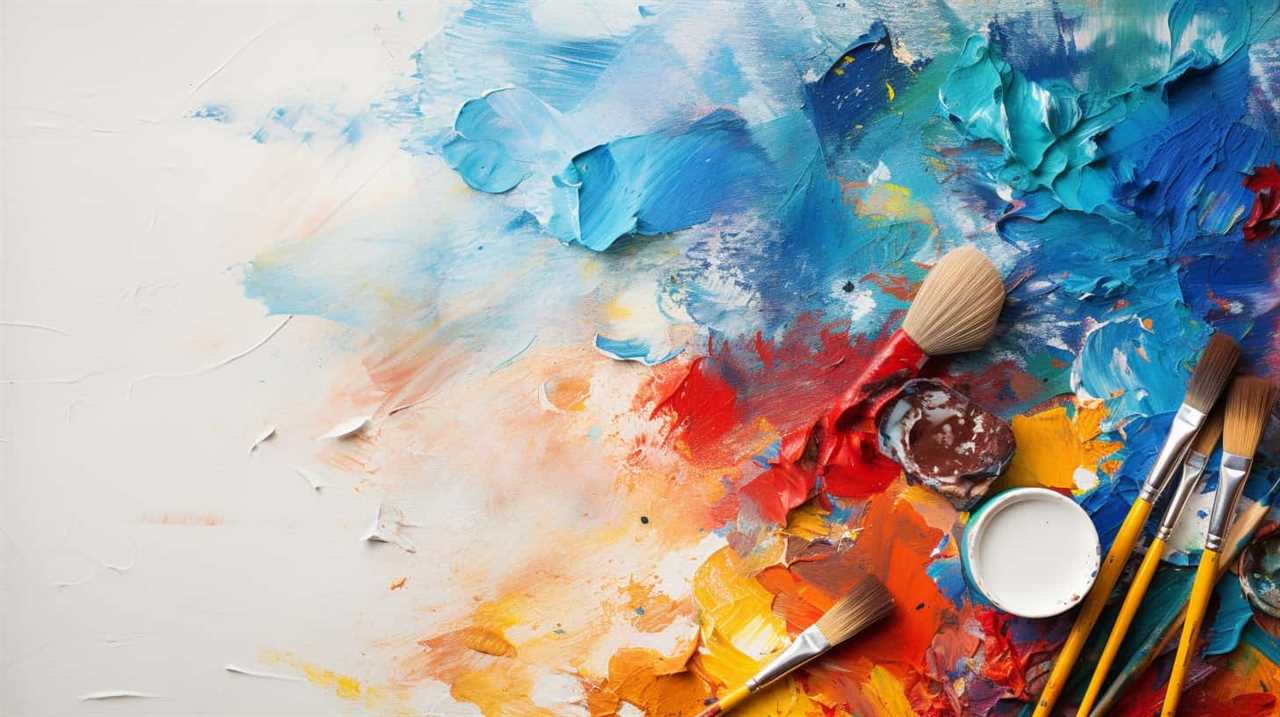
| Traditional Art | Digital Art |
|---|---|
| Static | Interactive |
| Physical | Virtual |
| Limited | Unlimited |
| Isolated | Connected |
This shift towards the digital realm has not only expanded the possibilities for artists, but also for viewers. No longer confined to a gallery space, art can now be accessed and experienced from anywhere in the world. The digital context allows for greater democratization and accessibility, breaking down barriers and reaching a wider audience.
However, this shift also raises important questions about the preservation and authenticity of art in the digital era. How can we ensure the longevity and integrity of digital artworks? How do we define the value of a piece that exists solely in the virtual realm? These are challenges that artists, curators, and collectors must grapple with as they navigate this new frontier.
As we continue to explore the digital landscape, it is clear that the future of art lies in its ability to adapt and evolve. The digital era presents us with endless possibilities, pushing the boundaries of creativity and challenging our preconceived notions of what art can be. In the next section, we will delve deeper into the future of art in the digital era and the implications it holds for artists and society as a whole.
The Future of Art in the Digital Era
As we look ahead to the future of art in the digital era, it becomes evident that technology will continue to have a profound impact on the art world. The advancement of digital mediums and tools opens up new possibilities for artists to express their creativity and push the boundaries of traditional art forms.

Moreover, the digital era has brought about increased accessibility and democratization of art, allowing a wider audience to engage with and appreciate artistic works.
Impact of Technology
We believe that technology is revolutionizing the future of art in the digital era. With technology’s influence, the art world is undergoing a profound transformation, opening up new possibilities and pushing boundaries like never before.
Here are four ways technology is shaping the future of art:
- Expanding creativity: Digital tools and software allow artists to experiment with new techniques, colors, and textures, unleashing their creative potential.
- Enhancing accessibility: The digital revolution has made art more accessible to a wider audience, breaking down barriers of geography and class.
- Fostering collaboration: Online platforms enable artists to connect and collaborate with others across the globe, fostering a sense of community and collective creativity.
- Creating immersive experiences: Through virtual reality and augmented reality, technology allows viewers to immerse themselves in art, transforming the way we experience and interact with artistic creations.
As technology continues to advance, it’s clear that the future of art will be shaped by these digital innovations.
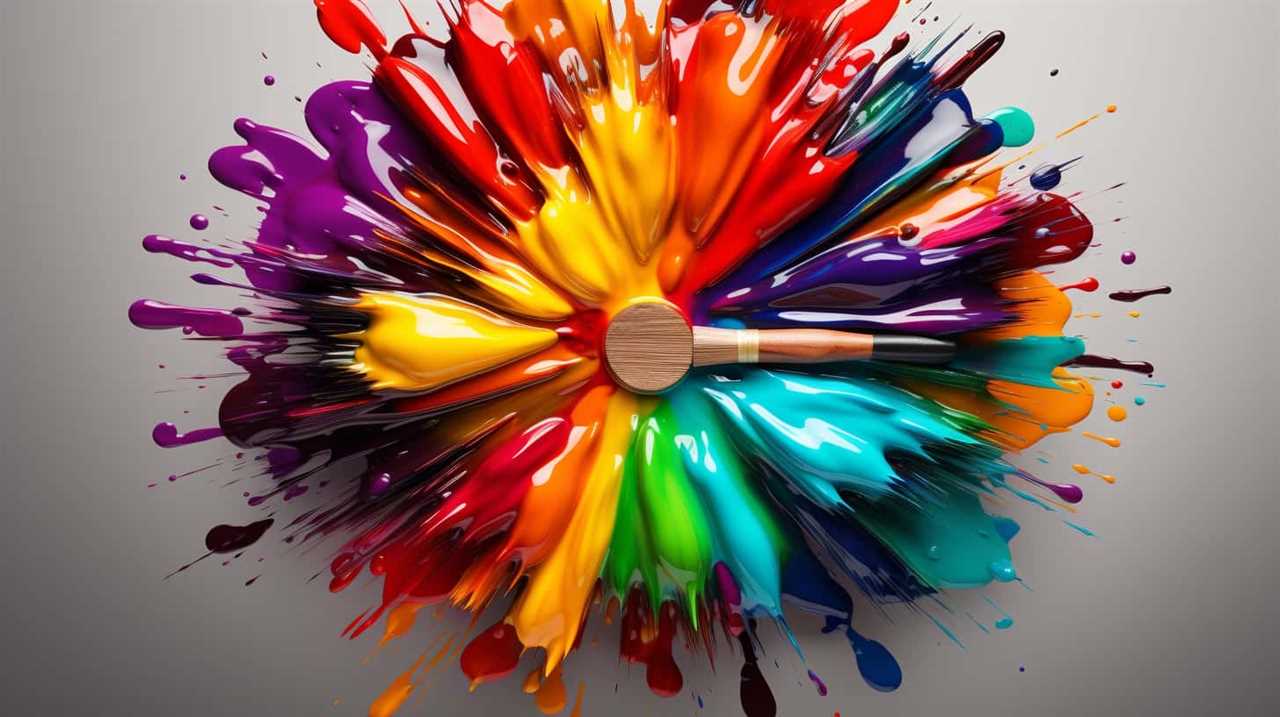
Transitioning into the subsequent section about ‘changing artistic mediums’, we’ll explore how technology is influencing the mediums artists use to express themselves.
Changing Artistic Mediums
With technology’s influence, the art world is undergoing a profound transformation in the digital era, as artists explore new artistic mediums and embrace the possibilities of the digital age.
As the boundaries between traditional and digital art blur, artists are experimenting with evolving techniques and embracing digital mediums to express their creativity. This shift allows for the exploration of new dimensions, interactivity, and immersive experiences that were previously unimaginable.
The incorporation of technology into the artistic process has opened up a world of possibilities, enabling artists to create innovative and dynamic works that engage the viewer on multiple levels.
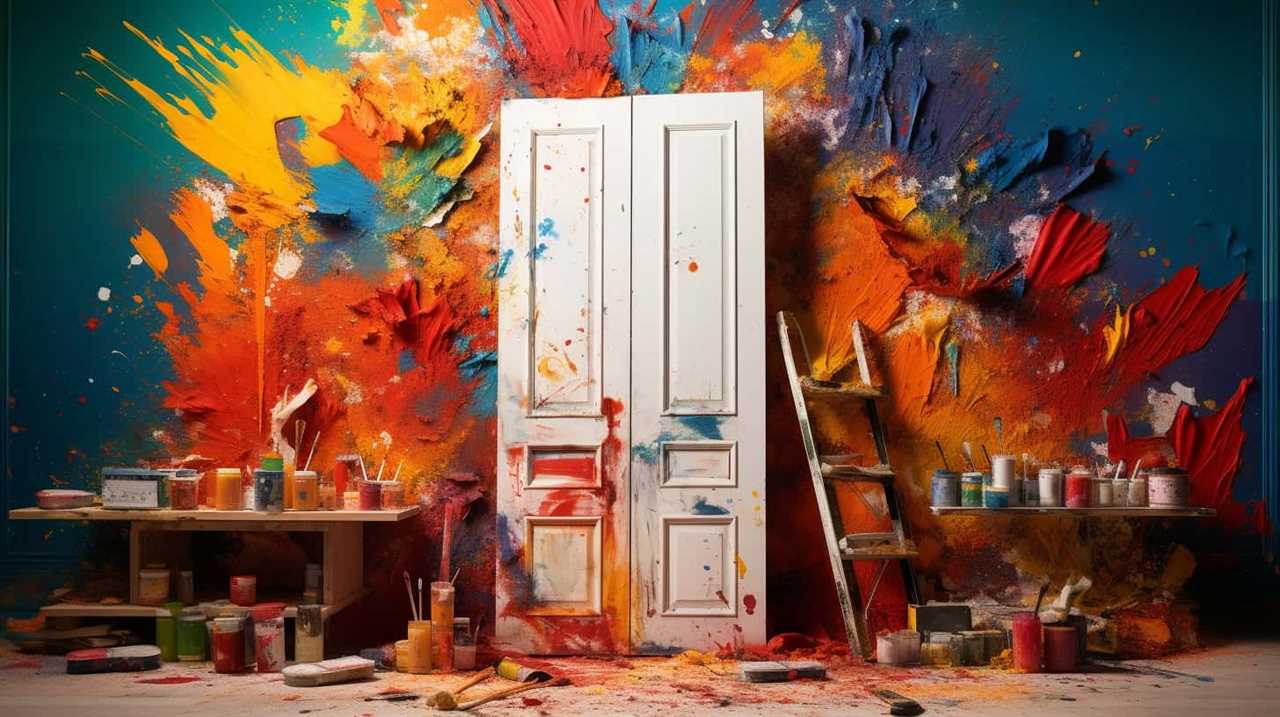
This fusion of art and technology not only challenges the traditional notions of art but also expands the accessibility and democratization of art, making it more inclusive and available to a wider audience.
Accessibility and Democratization
The digital evolution of art has revolutionized the accessibility and democratization of artistic expression. With the advent of technology, art has become more accessible and inclusive than ever before. Here are four key ways in which digital accessibility has transformed the landscape of art:
- Online platforms: The internet has provided a global stage for artists to showcase their work, reaching a vast audience regardless of geographical location.
- Social media: Artists can now connect directly with their audience through platforms like Instagram and TikTok, bypassing traditional gatekeepers and establishing their own brands.
- Digital tools: The availability of affordable digital tools has empowered aspiring artists to experiment and create without the need for expensive equipment or formal training.
- Virtual reality: Through virtual reality experiences, art can be experienced in immersive and interactive ways, breaking down physical barriers and expanding the possibilities of artistic expression.
The democratization of art through digital accessibility has opened doors for marginalized voices, fostering a more inclusive and diverse artistic community.
Redefining Creativity in the Age of Digitalization
In an era of digitalization, artists and experts are redefining creativity to adapt to the changing landscape. The boundaries between traditional art forms and technology are blurring, and this has led to a surge of innovation and experimentation in the art world. Technological advancements have provided artists with new tools and mediums to express their creativity, pushing the boundaries of what is possible. This shift has challenged conventional notions of creativity and opened up new avenues for artistic exploration.
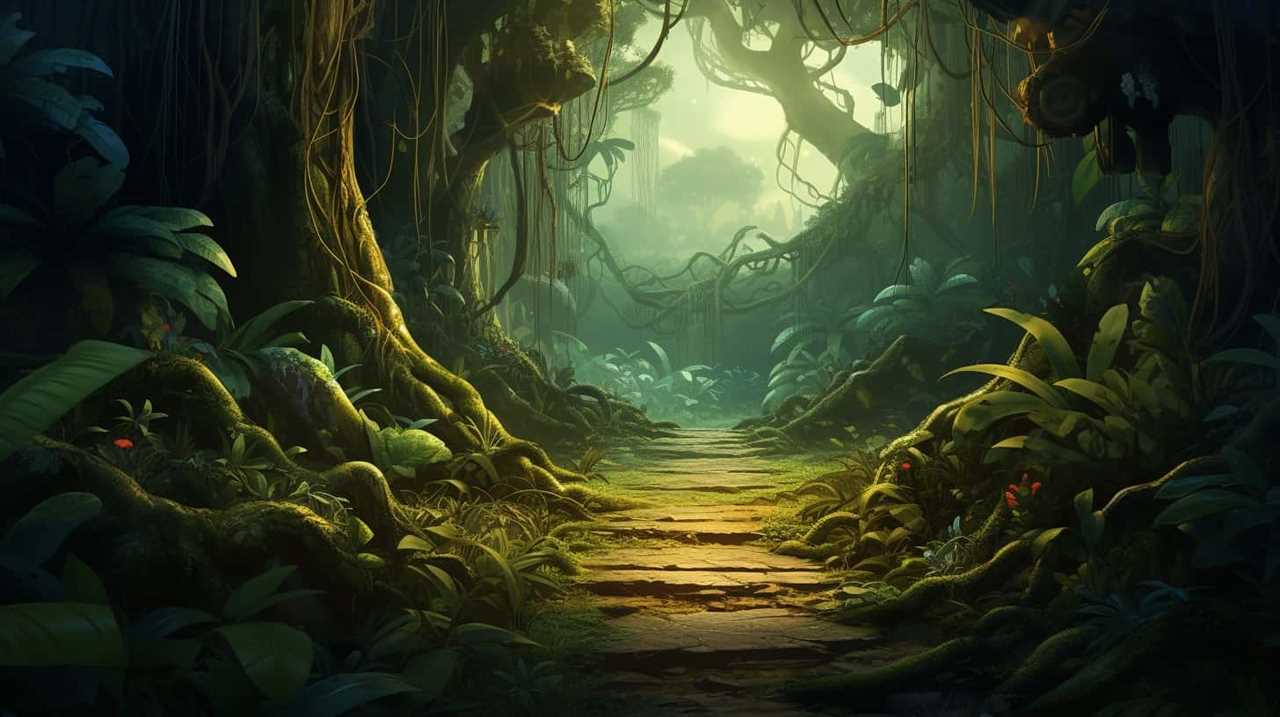
| Technological Advancements | Blurring Boundaries | Artistic Innovation |
|---|---|---|
| Virtual Reality | Digital Art | Interactive Installations |
| Artificial Intelligence | Augmented Reality | Data Visualization |
| 3D Printing | Video Art | Algorithmic Art |
The integration of technology into art has not only revolutionized the creative process but has also expanded the accessibility and reach of artworks. Digital platforms and online galleries have made art more accessible to a wider audience, democratizing the art world and breaking down barriers to entry. Artists can now showcase their work to a global audience, while viewers can engage with and appreciate art from the comfort of their own homes.
As we delve further into the digital age, perspectives on art’s evolution in the digital world continue to emerge. Let us now explore the various viewpoints and insights shared by experts in this ever-evolving landscape.
Perspectives on Art’s Evolution in the Digital World
As we delve further into the digital age, our understanding of art’s evolution in the digital world becomes enriched with diverse perspectives and insights from experts. This ongoing dialogue allows us to explore the intersection between artistic expression and technological advancements.
Here are some key points to consider:

- Breaking traditional boundaries: The digital world has provided artists with new tools and mediums to express their creativity. From digital painting to interactive installations, artists are pushing the boundaries of what’s considered art.
- Democratizing art: Technology has made art more accessible than ever before. Online platforms and social media have allowed artists to share their work with a global audience, breaking down geographical barriers and connecting people from different cultures and backgrounds.
- Challenging the status quo: The digital revolution has disrupted the traditional art world, challenging established norms and hierarchies. Artists are experimenting with new forms of expression, blurring the lines between different disciplines and creating hybrid art forms.
- Exploring the relationship between art and technology: The integration of technology in art has sparked a dialogue about the role of machines and algorithms in the creative process. Artists are exploring the possibilities of artificial intelligence, virtual reality, and augmented reality to create immersive and interactive experiences.
In this ever-evolving digital landscape, artists and experts continue to explore the potential of technology as a tool for artistic expression. The ongoing conversation about art’s evolution in the digital world provides us with valuable insights and perspectives, shaping the way we understand and appreciate contemporary art.
Frequently Asked Questions
How Has the Digital Transformation of Art Affected the Accessibility of Artwork for the General Public?
The digital transformation of art has revolutionized accessibility. Online galleries and social media have expanded the reach of artwork, allowing the general public to engage with diverse artistic expressions, fostering a sense of liberation and democratization in the art world.
What Are Some Examples of Technological Advancements That Artists Have Embraced in the Art World?
Technological advancements in the art world have had a profound impact on artists. They have embraced tools like virtual reality, 3D printing, and digital painting, revolutionizing their creative process and pushing the boundaries of artistic expression.
How Has Digitalization Revolutionized the Way Art Is Created, Exhibited, and Consumed?
Digitalization has revolutionized the art world, transforming the way art is created, exhibited, and consumed. The digital art market has expanded, offering new opportunities for artists, while also impacting traditional art forms and challenging traditional notions of artistic value.
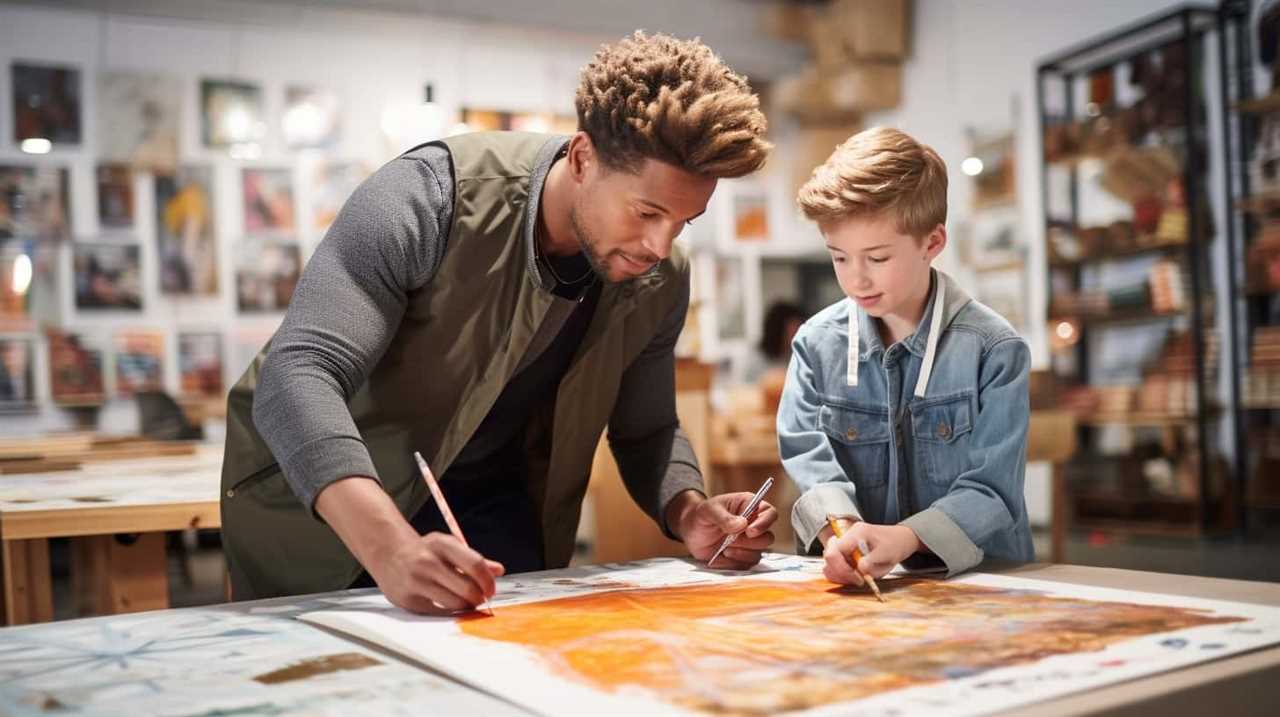
What Are the Main Challenges That Artists Face in Adapting to the Digital Age?
Adapting to the digital age presents challenges for artists. The need to master new technologies and navigate the vast online landscape can be overwhelming. However, embracing these changes also offers opportunities for growth and reaching a global audience.
How Do Artists Incorporate New Technologies, Such as Virtual Reality or Artificial Intelligence, Into Their Artistic Practice?
Artists are incorporating new technologies like virtual reality and artificial intelligence into their artistic practice to push boundaries and explore new possibilities. These integrations offer exciting opportunities for creativity, expression, and immersive experiences.
How is Art’s Digital Evolution Impacting Today’s Creative Scene According to Experts?
Art’s digital influence in the creative scene cannot be overlooked, say experts. It has brought forth a shift in the way artists create and exhibit their work. From digital painting to virtual reality experiences, the impact is immense, shaping a new era of creativity in the art world.
Conclusion
And so, as we gaze upon the ever-evolving world of digital art, we find ourselves in a state of simultaneous awe and confusion.
The experts, with their quotes and insights, attempt to guide us through this realm of pixels and algorithms. They speak of revolution and transformation, of artists embracing technology and redefining creativity.

Yet, amidst all the hype and excitement, we can’t help but wonder: Is art truly finding its place in the digital era, or are we just creating a virtual gallery of confusion?
Lauren’s talent in writing is matched by her passion for storytelling. Her love for books and deep understanding of culture and entertainment add a distinct flavor to her work. As our media and press contact, Lauren skillfully bridges the gap between afterQuotes and the broader media landscape, bringing our message to a wider audience.





